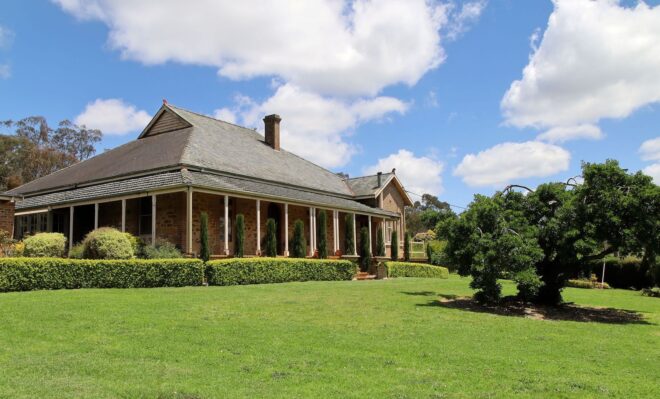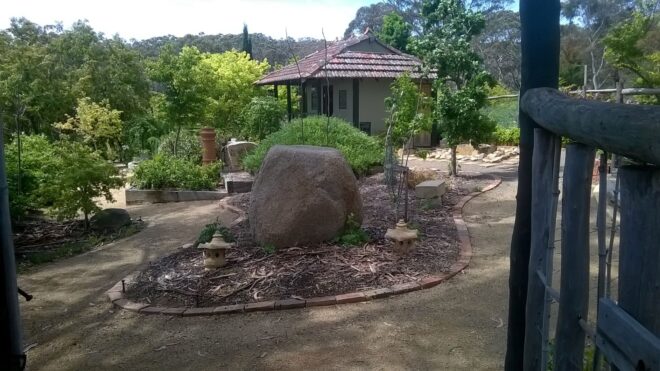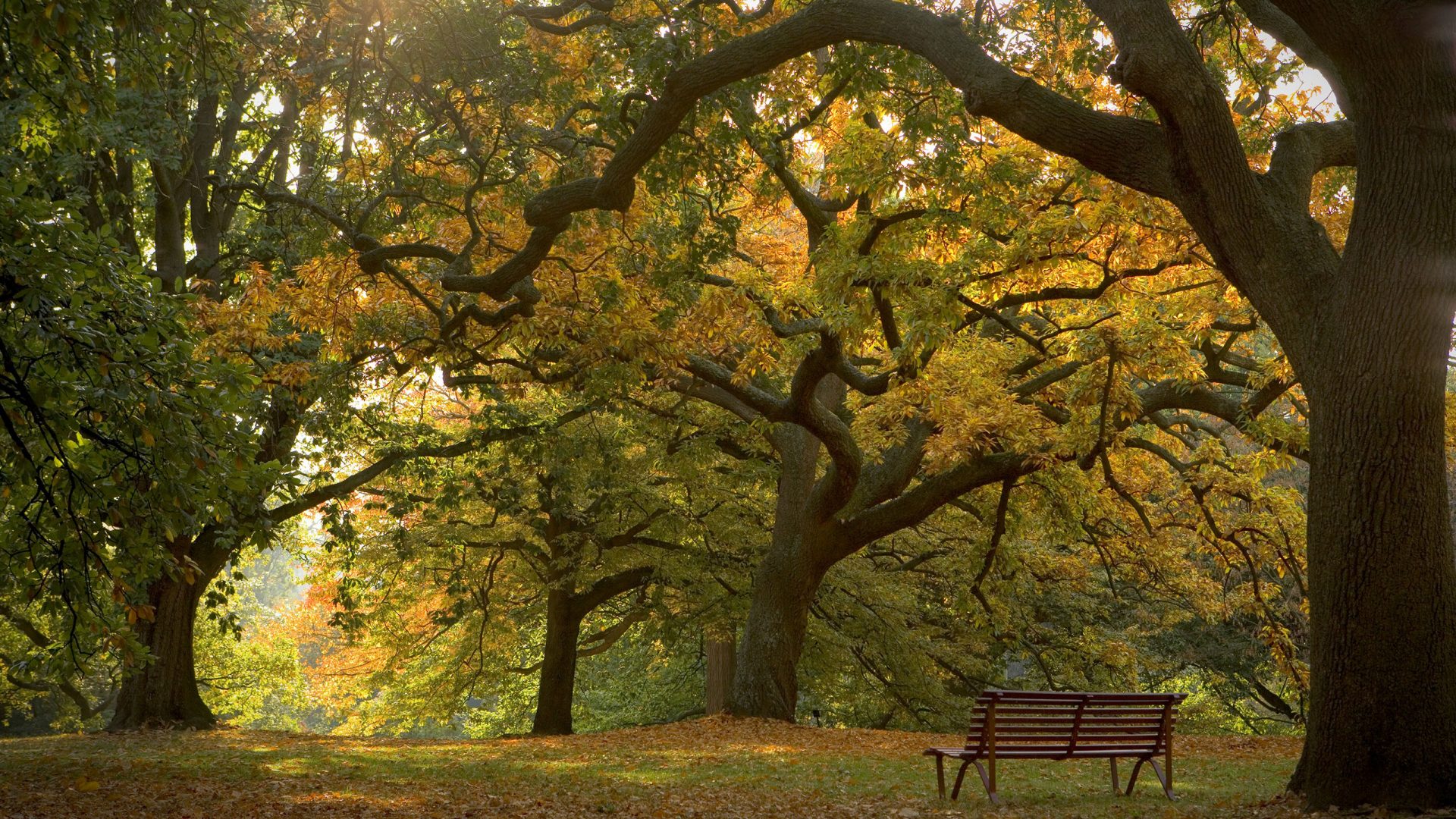Climate change often highlights long-standing preservation issues rather than discovering new problems.
Professor May Cassar, Director of University College London’s Institute for Sustainable Heritage[1].
By their nature, heritage gardens are dynamic, complex and continually evolving. They often combine plants and trees from many different eras, with exotic and native species replaced because they are no longer fashionable, are endangered or have changed their status to become invasive species. Such considerations, while inherent in managing and caring for heritage gardens, are heightened by the impacts of climate change. An understanding of variations in temperature, rainfall, soil, pests and diseases has always been important for ensuring the longevity of heritage gardens and is even more so in light of the greater changes to growing conditions and seasonal variations brought about by climate change. Planting choices and adaptation plans must be underpinned by a sustainable model for ongoing garden management and renewal.
The following case study illustrates how a response to climate change also reflects ways in which heritage gardens continue to be negotiated between natural, contemporary and historical factors. Established during the 1840s on the outskirts of the regional New South Wales town of Goulburn, Kentgrove is a property set on 14 hectares. It retains the original homestead, in the past owned by three Goulburn mayors and, when it became a sheep station during the 1930s, a prominent grazier in the region.

During the late 19th century Kentgrove had an orchard of 30,000 trees that provided fruit for its own cannery, producing Argyle Jams. Today the garden at Kentgrove incorporates many of the original plantings and trees, although no longer the extensive orchards. It is a significant cool climate heritage garden in Australia.
The current owner, Doug Rawlinson, maintains and adapts his garden to the uncertainties implicit in climate change. He realises that changes in rainfall, temperature, soil, pests and disease along with replacement plantings have the potential to impact on the historic authenticity of Kentgrove’s gardens. An awareness of the predicted effects of climate change has allowed this heritage garden to maintain its character and many of the original paintings. The owner has been preparing for change in the garden through monitoring fluctuations in temperature and rainfall, installing shade cloth, planting hardy species, succession planting and adapting drainage and water storage systems. These strategies are helping to mitigate against the wide variety of effects of climate change, creating a heritage garden that blends botanical, aesthetic and historic value with future resilience.
I put the following questions to Doug Rawlinson, owner of Kentgrove in March 2024. His answers offer insights into the evolving practical, sustainable, ethical and environmental considerations required to manage this property today and into the future.
How true is the current planting in the garden to its original, regardless of the effects of climate change in the past few years? Is it very much along the same lines or has it evolved to include varieties not available at the time the garden was established but which fit with the overall garden style?
The original plantings at Kentgrove can be seen in photos from the early 1900s and 1920s − much of these have been kept alive. There are some plants in the garden that were planted in the late 1800s: the Japanese spindle bush (Euonymous japonica) and stone pine (Pinus pinea) . Some of these are out of fashion now. All the old eucalypts are original too. The oldest fruit tree is an apricot (Prunus armeniaca), which is between 110 and 120 years old; 12 pear trees of a similar age have survived. The original orchard had 30,000 fruit trees and was the largest in NSW. What I wanted to plant was more contemporary hedges: there are well over 1000 hedge plants and around 300 deciduous trees at Kentgrove. These fit within the overall garden style now, although not all original, not returned to a complete heritage garden.
Has climate change impacted on any planting? Has it caused plants to no longer flourish, or even die, and not be able to be replaced? Conversely, have any plants grown so well due to climate change that they need to be removed?
There have been distinct changes with the amount of rainfall we get and when. There is now too much or not enough water and the seasons are now extending and overlapping more: summer is overlapping with autumn. And in the past, it was colder, there was more frost, this hasn’t been seen in many years. The winters are becoming milder. We used to get more frosts, 30 or so per year, now it’s only 12 to 15. I lost one hedge of westringias (Westringia fruticosa ‘Smokey’). They were in good soil and survived eight or nine years. We had a dry spell then it switched to rain and all died. Our 100-plus-year-old wisteria only came into leaf in early January 2024, four months later than normal and a white one came into leaf only, even later.
I have not had to make changes in the watering, as I have plenty of water at Kentgrove. This includes automatic watering systems, bore and dam water, a megalitre dam, and using dam and tank water. Kentgrove estate originally had four or five outside taps. It now has 35, for watering, for fires or bushfires, and I mow outside the fence boundaries, east and west, to create barriers and for fire management. There are five pumps if the power goes out, but the house is irreplaceable. I just mitigate against risks, in terms of managing the property, and keeping the grass down; there are green spaces for safety.
There are no problems with the European deciduous trees. With the wet seasons we have had, the hill area now has thousands of scotch thistles (Onopordum acanthium). This has never happened before, also blackberries: it’s the combination of sun and water.
And more extreme climate events increase the incidences of pests. In 2003 I think it was, there were bugs that came into Goulburn, they were everywhere, in everything, this lasted for three weeks and then they went. The drought in 2019 also brought lots of beetles.
Have you had any loss of heritage trees or plants at Kentgrove? If so, what have they been replaced with and why?
I haven’t had any loss of heritage plantings at Kentgrove. With the new Moongate Garden I’m building, I’ll plant conifers. They are very hardy. I knew there was a rock shelf below the soil but have chosen conifers purposely. There’s also the ‘bee garden’, to attract birds, bees and butterflies.

What plants/ themes have been specifically chosen to be a ‘climate change’ garden at Kentgrove?
There are strong winds at Kentgrove. I planted 100 plus Leighton green conifers (Leylandii) to create a strong windbreak hedge, to protect against windstorms. The kitchen garden is on the old tennis court, which has a slope. There are three water outlets. Heavy rain can wash away the beds, so I made raised beds; these retain nutrients. In 2011 we had a heat wave and in early 2012 there were many days over 40 degrees. I lost all my tomatoes and lettuces, which died no matter how much water I gave them. They just turned brown, so I put up a shade area. If the power goes out there is gravity-fed watering, no need for the dam or bore.
The house is irreplaceable so I mitigate against risks from bushfires. As well as good water supply, I mow outside the fence boundaries, east and west, to create barriers for fire management; there are green spaces for safety.
How will managing climate change impact on the seasonal maintenance at Kentgrove?
There may be loss of heritages trees and the need for future plantings. For example, with the stone pine (Pinus pinea) there used to be lots of young ones coming up that I’d just pull out. Now I have left two or three that come up to replace the old ones in the hope I have a replacement tree at the same time the old one goes. The tree has a personal significance for me. When I owned and managed the plant nursery in Goulburn I grew stone pines. They weren’t very popular at the time, but I still have a connection to them.
Has climate change made a difference to the fauna and birds in the garden?
Now we get town birds − cockatoos, corellas − which will be a problem. With all the houses being built the birds are coming further out to Kentgrove; they will be destructive in the garden. We have rats, possums, and vermin here. With frogs, there are more of them, because I’ve created the right environment for them. There are also fish, around 300 of them in the ponds, in the Japanese garden, they are breeding and well fed! There are more lizards − blue tongues – it is the right environment for them. But there are fewer snakes because it is a clean environment (no wood piles or rubbish), so no homes for them and they are not a problem.
There are now new ‘wet weather weeds’ that are difficult to kill. They are prolific in the garden where there is water. Lots of trees in the native area are dying. This is in response to climate change: the hot weather, dry weather and wet weather are all closer together. These fluctuations in the weather are symptoms of climate change. Australia’s population is now 27 million. This will continue to impact on climate change.
[1] Cassar, M., Climate change and the historic environment ‘, UCL, Centre for Sustainable Heritage, London, 2005, p. 3 The study’s recommendations can be found here: https://www.ucl.ac.uk/bartlett/heritage/research/projects/project-archive/climate-change-and-historic-environment
This article is one of a series prepared for a project, Antipodean historic gardens and climate change, partly funded by a grant from the international charity, the Historic Gardens Foundation.

